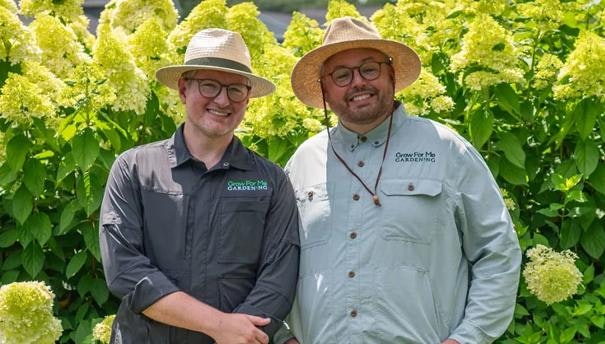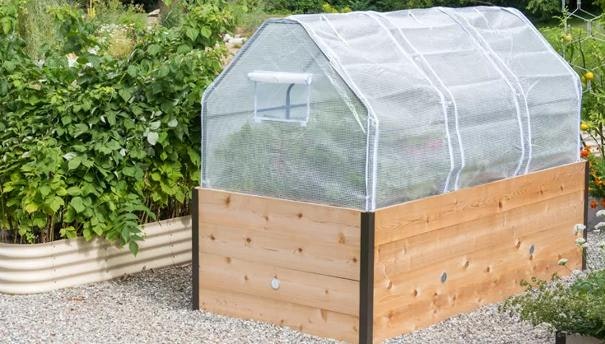In the first article of this series we defined gardening with the wild along with the benefits this practice can bring to our gardens and our hearts. Now, we will get to know the plants with whom we garden when we garden with the wild, and so, we will dive into the life cycles and growth habits of common weeds of the Northeast. This understanding can inform what management strategies we use when working with each plant, and with that you will have the tools you need to begin your journey gardening with the wild.
Before we get into the thick of it, I guess it’s important, since we’re talking about wild and weedy plants, to start by answering the question, what is a weed? This label has had many definitions over the years. To quote Ralph Waldo Emerson, a weed is “a plant whose virtues have not yet been discovered.” Less morally dependent, a well-known adage is: a weed is a plant in the wrong place. I'm going to add another definition here and say a weed is a plant who solidifies its place in the ecosystem as a pioneer species. Pioneer species is a term used, when talking about ecological succession, to describe the plants whose job it is to colonize bare earth after a disturbance to an ecosystem. Anything that disturbs the stability of an ecosystem in its current form creates space for pioneer species. Mother Earth’s disturbances include windstorms, floods, fires, large grazing animals, and more. Within our built environment, disturbance comes by way of construction, clearing, and yes, gardening.
Pioneer species’ job in the ecosystem is to inhabit cleared land to make it more habitable for plants with more specialized growth requirements who would follow and then slowly shade them out. Pioneer species are quick to sprout, grow, and set seed; chickweed can have up to five generations in one growing season! They tend to love full sun, are very effective photosynthesizers, and attract loads of pollinators. They are tough, meaning they can tolerate a range of challenging growing conditions including soil compaction, low-nutrient soil, and air pollution. Seeds can remain viable in the soil for decades, which is why it seems like there is a never-ending supply to inhabit our gardens. Understanding these wild and weedy plants’ roles in the ecosystem gives us clues for how to work with them and can help to soften our hearts as we appreciate what they bring to the world.
Pioneer species come in all shapes and sizes. They can live their entire life cycles, from seed to seed, in one growing season as annuals, in two seasons as biennials, or over many, many seasons as perennials. Their root systems are often fibrous, taproots, or rhizomes (underground stems).
Perennial plants are the longest lived and because of that, have the biggest impact on your garden. Some common perennial weeds include:
- Dandelion (taproot)
- Mugwort (rhizome)
- Japanese knotweed (rhizome)
- Ground ivy (fibrous)
- Broadleaf plantain (fibrous)
- Red clover (fibrous)
- Canada goldenrod (rhizome)
- Milkweed (rhizome)
- Hedge bindweed (rhizome)
- Goutweed (rhizome)
- Quackgrass (fibrous)
-
Curly dock (taproot)
Biennials live only for two years, so the impact of each individual plant is minimal. Some common biennial weeds include:
- Mullein (taproot)
- Evening primrose (taproot)
- Burdock (taproot)
-
Garlic Mustard (taproot)
Annual weeds have the lowest impact as each individual plant will be there for only one season. Some common annual weeds include:
- Horseweed (taproot)
- Daisy fleabane (fibrous)
- Wood sorrel (rhizome)
- Lambsquarters (taproot)
- Purslane (taproot)
- Green foxtail (fibrous)
- Virginia pepperweed (taproot)
- Pennsylvania smartweed (fibrous)
- Shepherd’s purse (taproot)
- Chickweed (fibrous)
- Pineapple weed (taproot)
-
Ragweed (fibrous)
Each of these plants has a story to tell, but ok, that’s not why we’re here. Let’s talk about the selective weeding management strategies available to us. Please note, if you have an overabundance of one or many wild and weedy plants, using multiple management strategies will be your best bet in balancing out the population(s). Here they are in no particular order:
- Cover bare ground using springtime cutback of last year’s growth ~ As we learned, pioneer species thrive in disturbed landscapes with bare soil! Covering the soil between plants before they grow up in spring is a great way to deter seeds from sprouting. Using spring cutback of last year’s growth keeps energy within the garden.
- Overplant with competitive garden plants ~ Many nursery plants are tough and like the same conditions as pioneer species. Planting them in an environment in which they thrive helps ensure they have the capacity to compete. Take care that what you are planting does not itself turn into a weed in its new ecosystem!
- Change the environment (plant trees and shrubs) ~ Pioneer species thrive in full sun; stimulate ecological succession by planting trees and shrubs to shade them out.
- Dig roots ~ This is most effective for perennial plants, as their root systems remain alive in the soil for many years. Be sure to try to get every bit of root, as some perennial plants (Japanese knotweed, mugwort, hedge bindweed, etc.) can resprout from even the smallest bit of root left in the soil!
- Repeated cutback at peak flowering time ~ This strategy weakens perennial plants over time by removing photosynthesizing, energy-generating leaves. Timing cutback with peak flowering weakens the plant because it’s sending most of its energy into its flowers, leaving its roots with very little.
- Cut back flowering stalks after blooming ~ This keeps new seeds from setting in your garden. Letting flowers bloom supplies food to the insects and birds that feed on the nectar. It can be tricky to time cutting back the flowering stalk before it sets seed, but this can be so helpful for wildlife—especially if the plant is native to your region!
- Remove seedlings ~ Once you’ve reached a place in the garden that feels balanced, one of the best ways to maintain that balance is to learn to recognize seedlings of the wild and weedy plants that like to frequent your garden. Removing seedlings is easy and creates less disturbance in the soil, thus supporting the beings living in the soil and lessening the probability of more pioneer species sprouting.
Have fun on your journey gardening with the wild! If you are feeling overwhelmed getting to know all the wild and weedy plants in your garden, begin by learning about one or two that you feel drawn to, or who are especially drawn to your garden. Once you feel confident, slowly branch out to others nearby and your knowledge will continue to grow. Watching the plants in your garden, you will notice who you especially enjoy having around, and who is new to the garden each year, drawn from decades of waiting in the seed bank to emerge into the light. We cannot imagine the treasure trove of beauty that lies underfoot, all we have to do is give space to make it bloom.




